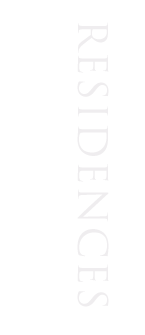The Interior Description
of Barra Castle
In design Barra Castle is an intricate and singular variation of
the L plan type, the main block lying north/south with a circular tower at the
south west. At the south east a D plan tower . An 18th century addition runs
eastward from the north end of the main block forming a square court closed on
the east side by a wall containing the entrance. The basement of the main block
is vaulted. In its present form it is chiefly the work of George Seton who was
granted the estates in 1598.
The plan is a somewhat complicated variation of the L, with the
main block lying north and south and a wing projecting eastwards at the south
end so as to form two entrants; in the other re-entrant is a circular
stair-tower , corbelled out to the square at the top to form the usual
watch-chamber; and there are two more round towers, with conical roofs,
projecting at the south-west corner of the wing. The 18th century
addition extends eastwards at the north end of the main block, thus forming
three sides of a square, a curtain wall joining this and the wing to enclose a
forecourt. The walls, of coursed rubble, are three storeys and a garret in
height. The dates 1614 and 1618 appear on the upper part of the building, along
with the symbols of George Seton, the intertwined three crescents.
The entrance is in the main re-entrant, within the courtyard, and
at eaves level above is a crow-stepped gablet – an unusual feature. The
basement is vaulted and contains the customary kitchen and cellars. The
turnpike stairway is unusually wide. The Hall on the first floor has been a
fine apartment, subdivided at an early date to form dining and drawing-rooms,
pine paneled, with a tiny chamber off, in the south-west tower. There is a
bedroom at this level in the wing, also with a small chamber in the south-east
tower. There is ample bedroom accommodation above and in the extension.
| 
